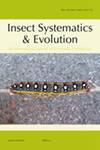Functional morphology and phylogenetic significance of the forewing base structure in Ensifera (Orthoptera)
IF 1.3
3区 农林科学
Q2 ENTOMOLOGY
引用次数: 0
Abstract
The forewing base structure of the orthopteran suborder Ensifera, a group of insects well known for their sound-producing behavior, was examined by using light microscopy, confocal laser scanning microscopy, and µCT. We detected significant novel characters, such as functional changes in the tpm9 muscle from the flexor to the extensor of the forewing that are likely associated with the acquisition of sound-producing behavior using forewings. Phylogenetic analysis based on the characters selected from the forewing base structure showed that the character system contains a strong phylogenetic signal supporting the monophyly of Ensifera, Tettigonioidea and Grylloidea as well as the sister-group relationship between Grylloidea and Gryllotalpoidea, but no apomorphies to resolve the deep phylogeny among superfamilies could be determined from this character system.直翅目刺翅目前翅基部结构的功能形态及其系统发育意义
利用光学显微镜、共聚焦激光扫描显微镜和微CT研究了以发声行为而闻名的直翅亚目Ensifera的前翼基础结构。我们发现了重要的新特征,例如前翼屈肌到伸肌的tpm9肌肉的功能变化,这些变化可能与前翼获得发声行为有关。基于前基结构所选性状的系统发育分析表明,该性状系统具有较强的系统发育信号,支持Ensifera、tetigonio总科和griyllolo总科的单系性,以及griyllolo总科和griyllotalpo总科之间的姐妹类群关系,但无法从该性状系统中确定能够解决超科之间深层系统发育问题的形像。
本文章由计算机程序翻译,如有差异,请以英文原文为准。
求助全文
约1分钟内获得全文
求助全文
来源期刊

Insect Systematics & Evolution
生物-进化生物学
CiteScore
3.00
自引率
0.00%
发文量
15
审稿时长
>12 weeks
期刊介绍:
Insect Systematics & Evolution (ISE) publishes original papers on all aspects of systematic entomology and the evolutionary history of both extant and extinct insects and related groups. Priority is given to taxonomic revisions and phylogenetic studies employing morphological and molecular data. ISE also welcomes reviews and syntheses that can appeal to a wide community of systematic entomologists. Single species descriptions, regional checklists, and phylogenetic studies based on few taxa or single molecular markers will generally not be accepted.
 求助内容:
求助内容: 应助结果提醒方式:
应助结果提醒方式:


